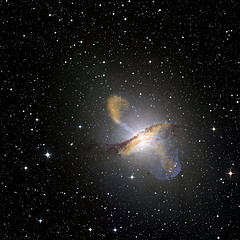 That’s the opinion of Michael Mautner, Research Professor of Chemistry at Virginia Commonwealth University:
That’s the opinion of Michael Mautner, Research Professor of Chemistry at Virginia Commonwealth University:
As members of this planet’s menagerie, and a consequence of nearly 4 billion years of evolution, humans have a purpose to propagate life. After all, whatever else life is, it necessarily possesses an incessant drive for self-perpetuation. And the idea isn’t just fantasy: Mautner says that “directed panspermia” missions can be accomplished with present technology.
“We have a moral obligation to plan for the propagation of life, and even the transfer of human life to other solar systems which can be transformed via microbial activity, thereby preparing these worlds to develop and sustain complex life,” Mautner explained to PhysOrg.com. “Securing that future for life can give our human existence a cosmic purpose.”
Hasn’t the relentless drive of self-propagation been shown to be somewhat problematic over the long term? Do we need a cosmic purpose? More importantly, does the cosmos need us to have a cosmic purpose? When evangelical ideology and colonialism run out of planetary surface, I guess they have to start looking further afield for things to interfere with… [image via badastronomy]
 While the needle-in-a-haystack search for life on other planets continues, we still consistently find new lifeforms on Earth when we look in the right places. Our oceans are still a source of biological mystery, but that’s not the only place that extremophile life can be found:
While the needle-in-a-haystack search for life on other planets continues, we still consistently find new lifeforms on Earth when we look in the right places. Our oceans are still a source of biological mystery, but that’s not the only place that extremophile life can be found:  Does the Earth harbour forms of life unrelated to the carbon-based DNA-powered stuff we know about?
Does the Earth harbour forms of life unrelated to the carbon-based DNA-powered stuff we know about?